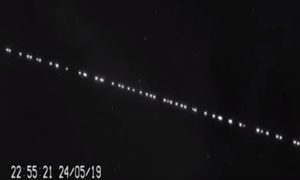In recent years, astronomers from NASA have been assessing ways to send people to Mars efficiently. Such a trip requires investing a lot of knowledge, time, money and effort, but it seems to be worth it since Earth is not anymore a suitable place for many people. The climate changes, the corruption, the conflicts among states or the diseases all point out that we humans should build ourselves a new home elsewhere. Of course, most likely it will be a process of hundreds or maybe even thousands of years, but it’s good to have ambitious guys like Elon Musk or engineers from NASA who are willing to take the first step towards that ultimate goal.
Bill Emrich’s nuclear propulsion idea
First of all, the time spent on getting to Mars would be enormous, considering the fact that the Red Planet is much farther away from us than the Moon is. Therefore, nuclear rocket engines placed on spaceships with Mars destination would buy us a lot of time.
Bill Emrich wrote an entire book on nuclear propulsion and he began to study the idea from over two decades ago. But only now the guys from NASA began to take his idea seriously since the Trump administration is putting pressure on the space agency to figure out a way of taking humans to Mars.
How does it work?
In short, it’s about a rocket engine powered by nuclear fission. This type of propulsion would be twice as efficient as the standard chemical engine, but there are truly deadly risks. A regular chemically propelled rocket would lift a nuclear-powered spacecraft into orbit, which would only then fire up its nuclear reactor. Otherwise, there’s a small chance that a rocket with a nuclear reactor could blow up on the launch site. And we can’t take that chance, since such a scenario may become another Fukushima-like nuclear disaster.
Rex Geveden, a former NASA associate administrator and CEO at BWX Technologies, stated for the National Space Council: “Many space exploration problems require that high-density power be available at all times, and there is a class of such problems for which nuclear power is the preferred – if not the only – option,”
When will NASA put in stage nuclear rocket engines?
NASA will make possible the first flight into space of a nuclear engine in 2024, after they finish developing safety protocols for operating nuclear reactors in space. Two years ago, NASA made a $19 million contract with BWX Technologies for developing the fuel and reactor components for a nuclear engine. In 2018, Congress earmarked $100m in NASA’s budget for the development of nuclear propulsion technologies. In the current year, NASA received another $125m from the Congress for its plans of nuclear propulsion for rockets.
Things are going pretty much according to plan, all we have to do is wait to see the final outcome. Will we humans be the true “Martians” from the Red Planet?
Sinetta Sing born and raised in Newcastle. She has written for The Daily Mail, The Prague Post and The Sun. In regards to academics, Sinetta earned her BBA from Durham University Business School. Sinetta covers health and science stories here at Tech Droid.






